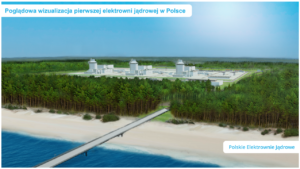Ukraine is close to the setting up of another direction of gas imports, through which from 1 January 2020, deliveries from Romania, Greece and Turkey may begin. They will be implemented on the basis of the existing infrastructure of the Trans-Balkan gas pipeline, which is now used exclusively by Gazprom. Implementation of the project will create an additional alternative route for gas supplies to Ukraine in order to enhance Ukraine’s energy security, which is especially important for the coming winter – writes Sergiy Makogon, CEO of the Operator of the gas transmission system of Ukraine.
Apparently, from 1 January 2020 Ukraine will have capacities to import gas from Romania, Greece and Turkey on the basis of the infrastructure of the Trans-Balkan gas pipeline, which passes through the territory of Moldova, Romania and Bulgaria. For several decades, the gas pipeline was used by Gazprom to supply gas to the Balkan countries, as well as Turkey and Greece. After the decision of the Russian monopolist to build two lines of the Turkish Stream the “pipe” is facing a real threat of a complete suspension. It is expected that after the launch of the Turkish Stream first line (it will start operating on 1 January 2020), Gazprom will remove at least 15 billion cubic meters from the direction. and after the implementation of the second line all 30 billion cubic meters will be wiped out. In this case, the gas pipeline will be completely empty and part of it on the Ukrainian territory will be used exclusively for gas transmission to consumers in the south of Odessa region, and the transit is as good as gone.
Understanding the inevitability of such a scenario, Ukrtransgaz back in 2016 appealed to the European Commission to free the gas pipeline from Gazprom’s monopoly, allowing its free use by other traders, in two directions: from north to south, and vice versa from south to north (which requires an additional set of technical works). The European Commission supported the project.
In September 2016, following a meeting of the CESEC High Level Working Group on the development of gas transmission infrastructure in Central and Southeast Europe, in Hungary the gas transmission system operators of the countries participating in the project signed a memorandum of cooperation. From Ukraine, it was signed by Ukrtransgaz, from Greece by DESFA S.A., from Bulgaria by Bulgartransgaz EAD, from Romania by Ngtc SNTGN Transgaz S.A. Later, Moldova, represented by Moldovagaz, joined the project.
The countries that signed the memorandum agreed to implement measures that from January 1 will create capacities, mainly for imports from south to north (including Ukraine and Moldova), 1.5 billion cubic meters of gas per year. If everything goes well, then the volume can be increased to 8 billion cubic meters of gas. The first phase requires little if any investment, and a further increase requires investment in additional infrastructure in Bulgaria.
The fact that the modernized infrastructure will be in demand was confirmed during the non-binding demand assessment procedure, which was carried out in 2018. During the procedure interest in the use of the section of the Trans-Balkan route connected with the Ukrainian GTS (in two directions) was confirmed by 11 European companies.
Within the framework of the project, Grebeniki (Ukraine) and Causeni (Moldova) gas measuring stations will be modernized by Ukraine and Moldova, which will allow them to operate in reverse mode,. Reconstruction of GMS Grebeniki will be completed before the end of 2019. The Ukrainian side also planned the construction of additional gas pipelines bypass lines and installation of new technological bindings. These works do not require large investments and will be financed by Ukrtransgaz tariff revenue.
It is worth noting that, unfortunately, the part of the Trans-Balkan gas pipeline is still covered by historical long-term gas transit contracts concluded with Gazprom, which have not yet expired. For example, in Bulgaria, these contracts expire only in 2030. This creates a lot of legal problems, but gradually, with the European Commission support, these problems are being solved. The important point is that from Romania to Greece, the gas pipeline passes through the EU and is subject to European rules.
The project implementation is of extreme importance for Ukraine as an additional route through which the country can receive additional gas volumes to the existing ones. In particular, the project provides an opportunity to import gas that is produced on the Romanian shelf. It is expected that by 2024, production in the region will reach 4-6 billion cubic meters per year. This gas pipeline can be used to supply gas from LNG terminals located in Greece and Turkey, as well as for the supply of Caspian gas, which will be transported via the TANAP gas pipeline from Azerbaijan (which has already been commissioned). This will increase competition in the gas market, since in fact Ukraine will gain access not only to the West European gas market, but also to the gas markets of Turkey and Greece, including gas from LNG terminals.
The presence of additional capacities for gas imports to Ukraine is the key to a smooth winter, when during peak periods the daily gas consumption in the country can reach 203 million cubic meters. At the same time, the capacities of all three directions (from Slovakia, Hungary and Poland) allow importing 66.5 million cubic meters per day. But what is important, only 27 million cubic meters are firm (guaranteed), and the remaining can be interrupted by adjacent GTS operators. All this suggests that in winter, even taking into account domestic gas production (58 million cubic meters), the daily deficit, if it is not covered by gas from underground storage facilities (UGS), can be 118 million cubic meters per day. That is why the issue of filling UGS is given great importance. For the safe passage of winter, taking into account the possible lack of transit (the contract with Gazprom expires on 1 January 2020), it is necessary to have at least 20.7 billion cubic meters in the underground gas storage facility. As of now, 17.4 billion cubic meters have already been accumulated in the UGS facility of gas, which is the highest figure since 2012. Now gas import capacities are almost 100% loaded.
The issue of filling UGS, given the possibility of the transit of Russian gas suspension, is also important because, technically, 260 million cubic meters per day can be raised from the storage facility only under the condition of one hundred percent load – 31 billion cubic meters. With a low level of underground gas storage facilities fill, the rate of gas withdrawal drops to 60 million cubic meters per day, which is clearly not enough to cover possible peak needs. Therefore, it is so important to accumulate at least 20.7 billion cubic meters in underground gas storage facility.
I would like to note that, unfortunately, there are currently no requirements for the establishment of gas reserves by all suppliers in Ukraine, of which there are already more than 300. Significant volumes of gas are injected by Naftogaz of Ukraine. The Ministry of Energy and the Coal Industry did not initiate amendments to the Regulation on the gas reserves establishment in order to oblige all gas suppliers to create a gas reserve in the amount of 10% of their monthly supply to their consumers. This is the standard European approach for creating such emergency gas reserves. We hope that the new government will pay attention to this problem, since this is a matter of national security.
It should be noted that the project implementation is extremely important for Moldova, which so far is entirely dependent on Russian gas supplies from the territory of Ukraine. In Moldova gas is used not only for the needs of the power industry, most of the electricity for the country’s needs is also generated from gas. In addition, Moldova does not have its own gas storage facilities, therefore it is extremely important for them to have backup gas sources. This project will create a real alternative to Russian gas supplies and strengthen their energy independence. However, there are a number of measures that the Moldovan side should carry out, and we are ready to provide them with maximum assistance. I am sure that the project will be implemented successfully with the joint efforts of the operators of the GTS of the participating countries. This will not only save the existing gas infrastructure, but also provide additional benefits from its use to all parties.








